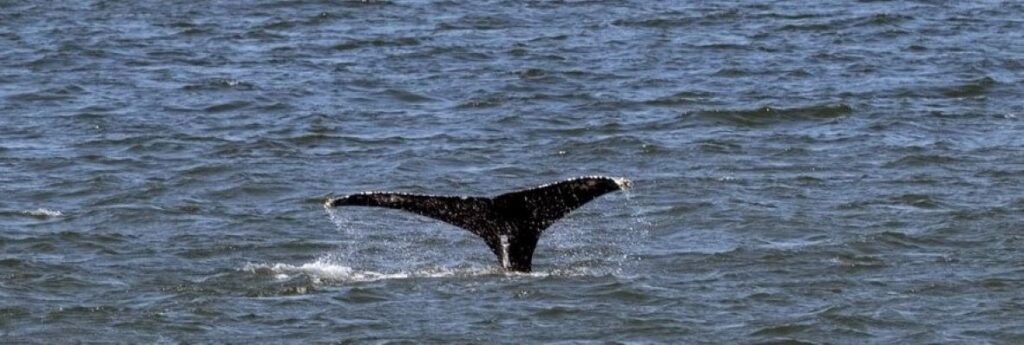Broadway, Times Square and Lady Liberty may soon have to take a back seat to whale watching in New York as a surge in the 25-ton mammals in the waters around the city is attracting visitors eager to get a glimpse of the city’s unexpected new residents.
Whale watch captains and scientists around America’s most populous city say recent years have seen a significant increase in the number of whales observed near the Big Apple. Many of them are juvenile humpbacks, and scientists say they’re drawn to New York by an abundance of the small fish they love to eat.
There are numerous theories about why whales are suddenly flocking to the city, but one of the most widely held is that the menhaden population has grown around New York and New Jersey.
Menhaden are small, schooling fish that humpbacks relish, and environmentalists believe cleaner waters and stricter conservation laws have increased their numbers near New York City.
Gotham Whale, a New York City-based whale research organization, made more than 300 observations of 500 total whales in 2019, said Paul Sieswerda, the non-profit’s president. That’s up from three sightings of five whales in 2011, after which a steady climb began, he said.
“Somehow or other more and more whales seem to be getting the message that New York is a good place to dine,” Sieswerda said.
“That kind of magnitude of increase is just phenomenal.”
The resurgence of whales in the New York-New Jersey Bight, a triangle-shaped indentation in the Atlantic coast, has attracted tourists who want to see and photograph the giant marine mammals.
But the concentration of whales near New York City also poses risks to the mammals, as they ply some of the most heavily traversed waters on the planet.
The whales are essentially “playing in traffic” by feeding so close to busy shipping lanes, Sieswerda said. And the National Oceanic and Atmospheric Administration has already declared an “unusual mortality event” for humpback whales from Maine to Florida in recent years due to an elevated number of deaths.
Since 2016, NOAA records show 133 humpback whales have died on the beaches and waters of the Atlantic coast. The 29 in New York were the most of any state. Of the dead whales examined, half had evidence of human interaction, such as a ship strike or entanglement in fishing gear.
The appearance of so many whales near New York City calls for environmental stewardship, said Howard Rosenbaum, director of the Wildlife Conservation Society’s Ocean Giants Program. Environmental safeguards, such as the Clean Water Act and Marine Mammal Protection Act, likely helped bring the whales back to New York’s bustling waterways, and more protection can help keep them safe there, he said.
The increased sighting of whales off New York City isn’t necessarily evidence that the total whale population is growing, said Danielle Brown, the lead humpback whale researcher with Gotham Whale and a doctoral student at Rutgers University.
The New York whales aren’t a standalone population, but rather members of feeding populations that mostly live farther north, such as in the Gulf of Maine, Brown said. And it’s unclear whether the whales are in New York because the larger population is growing.

